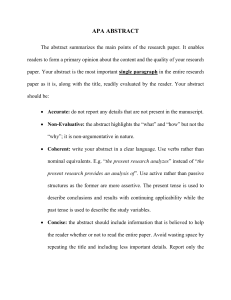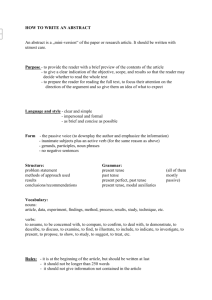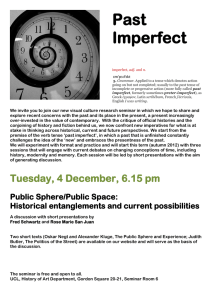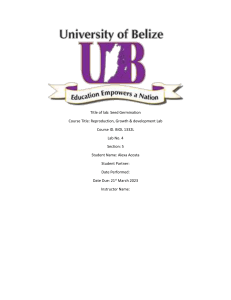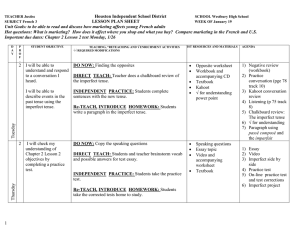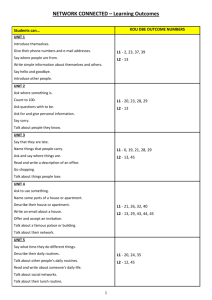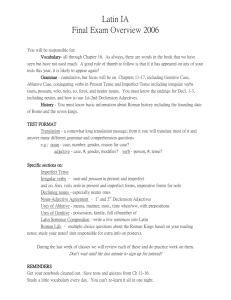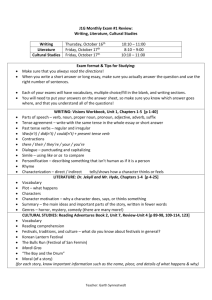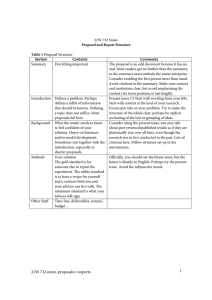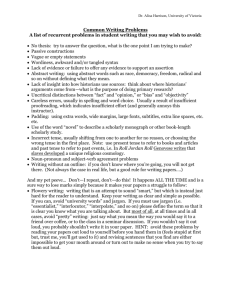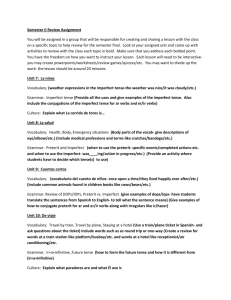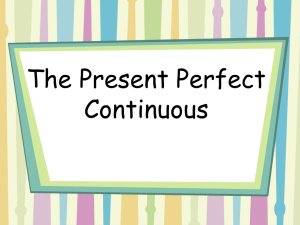MALT-template
advertisement
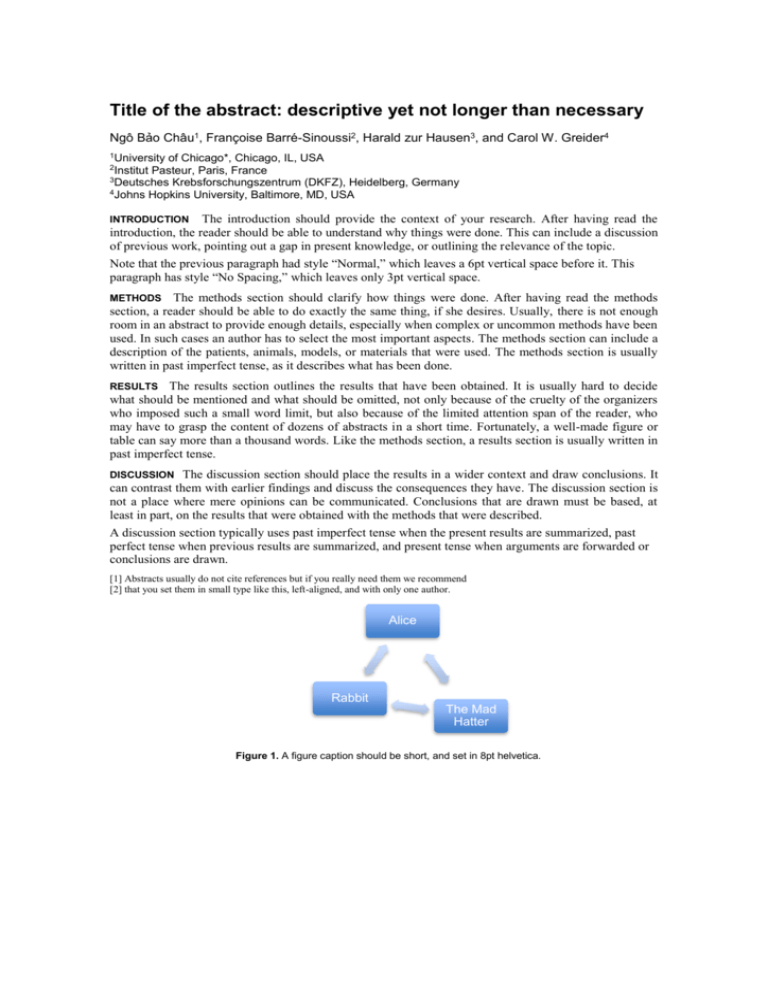
Title of the abstract: descriptive yet not longer than necessary Ngô Bảo Châu1, Françoise Barré-Sinoussi2, Harald zur Hausen3, and Carol W. Greider4 1University of Chicago*, Chicago, IL, USA Pasteur, Paris, France 3Deutsches Krebsforschungszentrum (DKFZ), Heidelberg, Germany 4Johns Hopkins University, Baltimore, MD, USA 2Institut The introduction should provide the context of your research. After having read the introduction, the reader should be able to understand why things were done. This can include a discussion of previous work, pointing out a gap in present knowledge, or outlining the relevance of the topic. Note that the previous paragraph had style “Normal,” which leaves a 6pt vertical space before it. This paragraph has style “No Spacing,” which leaves only 3pt vertical space. INTRODUCTION The methods section should clarify how things were done. After having read the methods section, a reader should be able to do exactly the same thing, if she desires. Usually, there is not enough room in an abstract to provide enough details, especially when complex or uncommon methods have been used. In such cases an author has to select the most important aspects. The methods section can include a description of the patients, animals, models, or materials that were used. The methods section is usually written in past imperfect tense, as it describes what has been done. METHODS The results section outlines the results that have been obtained. It is usually hard to decide what should be mentioned and what should be omitted, not only because of the cruelty of the organizers who imposed such a small word limit, but also because of the limited attention span of the reader, who may have to grasp the content of dozens of abstracts in a short time. Fortunately, a well-made figure or table can say more than a thousand words. Like the methods section, a results section is usually written in past imperfect tense. RESULTS The discussion section should place the results in a wider context and draw conclusions. It can contrast them with earlier findings and discuss the consequences they have. The discussion section is not a place where mere opinions can be communicated. Conclusions that are drawn must be based, at least in part, on the results that were obtained with the methods that were described. A discussion section typically uses past imperfect tense when the present results are summarized, past perfect tense when previous results are summarized, and present tense when arguments are forwarded or conclusions are drawn. DISCUSSION [1] Abstracts usually do not cite references but if you really need them we recommend [2] that you set them in small type like this, left-aligned, and with only one author. Alice Rabbit The Mad Hatter Figure 1. A figure caption should be short, and set in 8pt helvetica.
